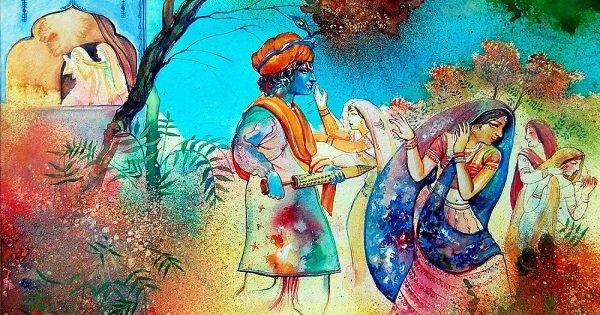Explosions shoot up to the sky
Fire burning evil to the ground
Clouds of smoke turn to piles of ashes
When the demon king is destroyed
Good prevails, time and again
The ritual of victory celebrated
By men, women and children alike
Hoping to please the great Gods
So they may bless us all
The spirit of festivity is in the air, contagious as ever. As Navratri comes to a close, people across India gear up for the grand finale. An electrifying buzz is omnipresent, a constant reminder of what’s to come. The capital rings with the hustle and bustle of heavy preparations to host the celebrations of the famous festival called Dussehra.
During this time of the year, one can always spot a wide array of boisterous effigies stacked in bulks on pavements and roadsides in West Delhi. They’re everywhere, standing out in all spectacle of colours, shapes and sizes. Gigantic faces with eerie grins and half-finished torsos are lined up one after the other, stretching into rows that go as far as the eye can see. It’s quite a stunning visual treat.
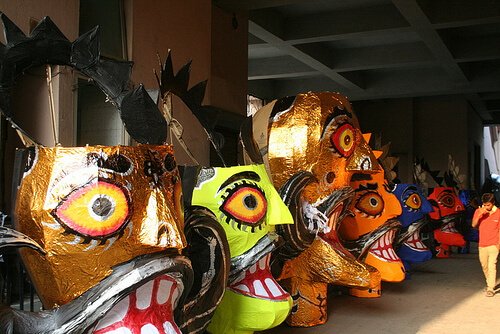
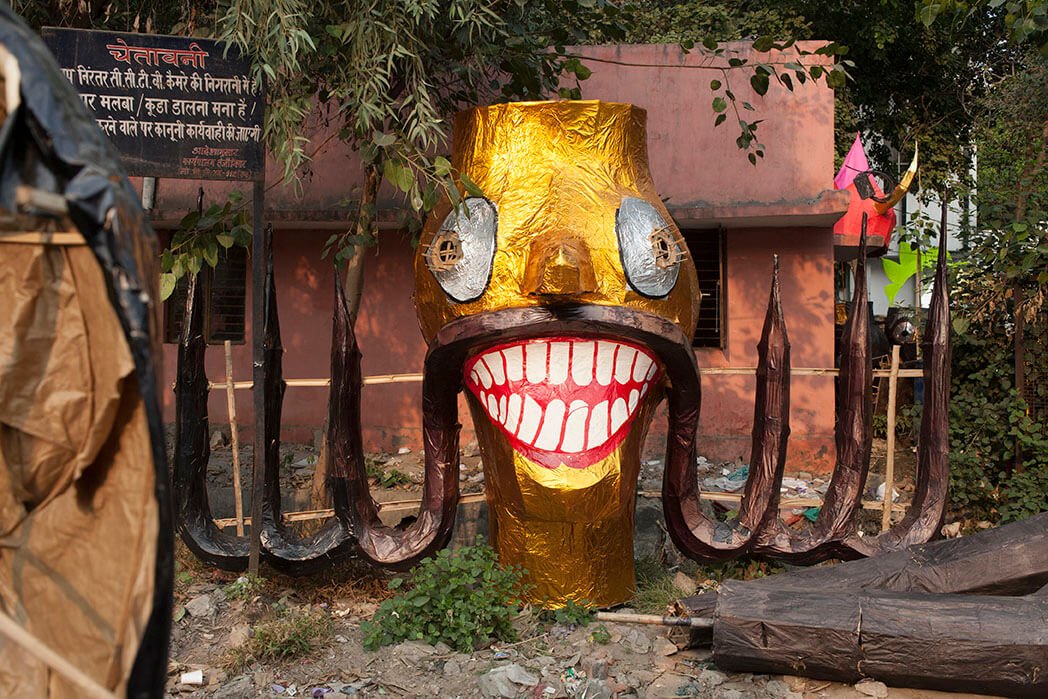
This is when one wonders about who’s creating these incredible versions of Ravana, and where they come from.
Well, there’s a whole industry out there, backed by a 50-year strong legacy of effigy-making. It consists of wonderfully gifted artisans who dedicate months to building an extravagant army of Ravanas, one at a time. They maintain other jobs round the year and start working of effigies 2-3 months before Dussehra. Who could’ve thought these carpenters and drivers, plumbers and mechanics were such skilled craftsmen?
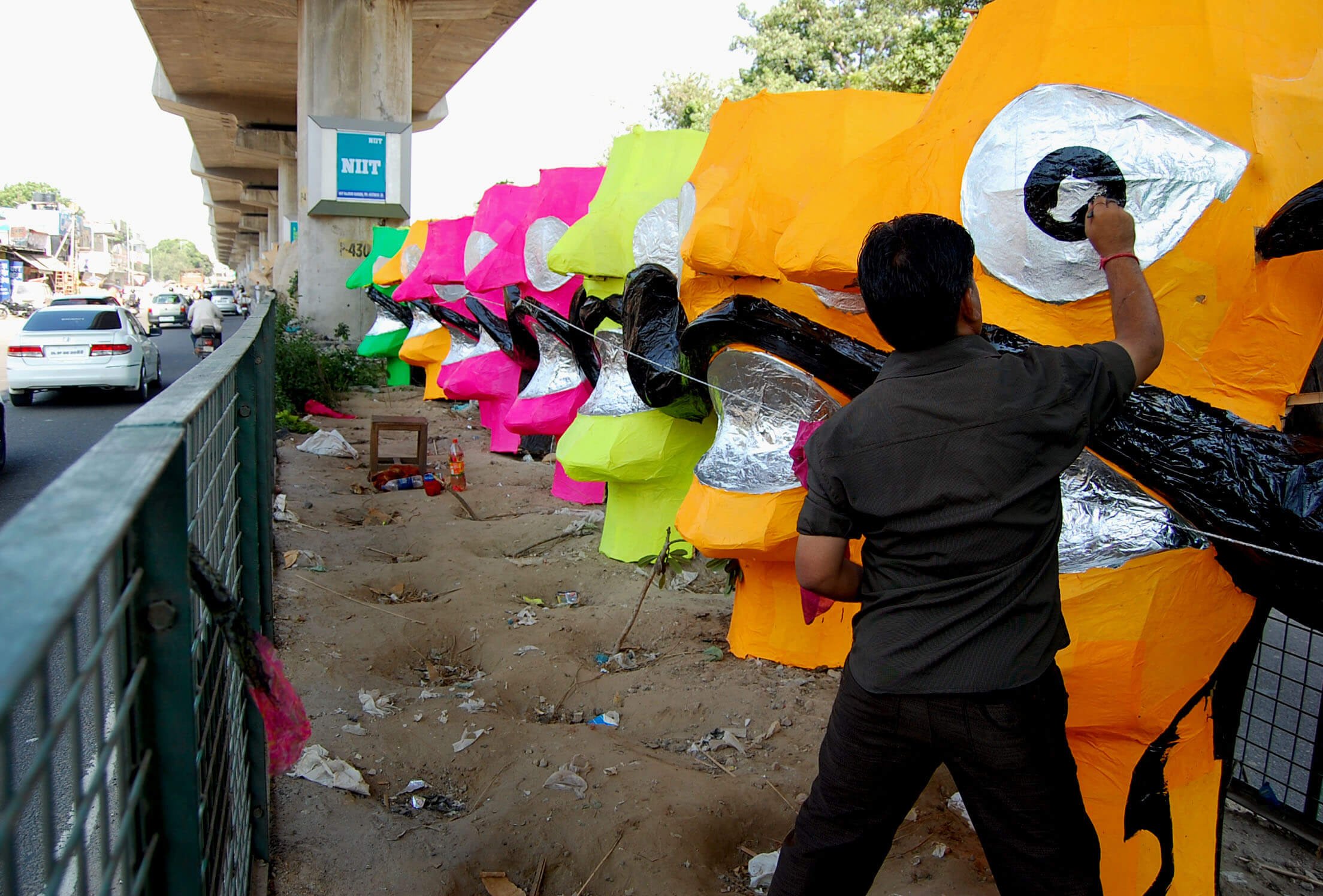
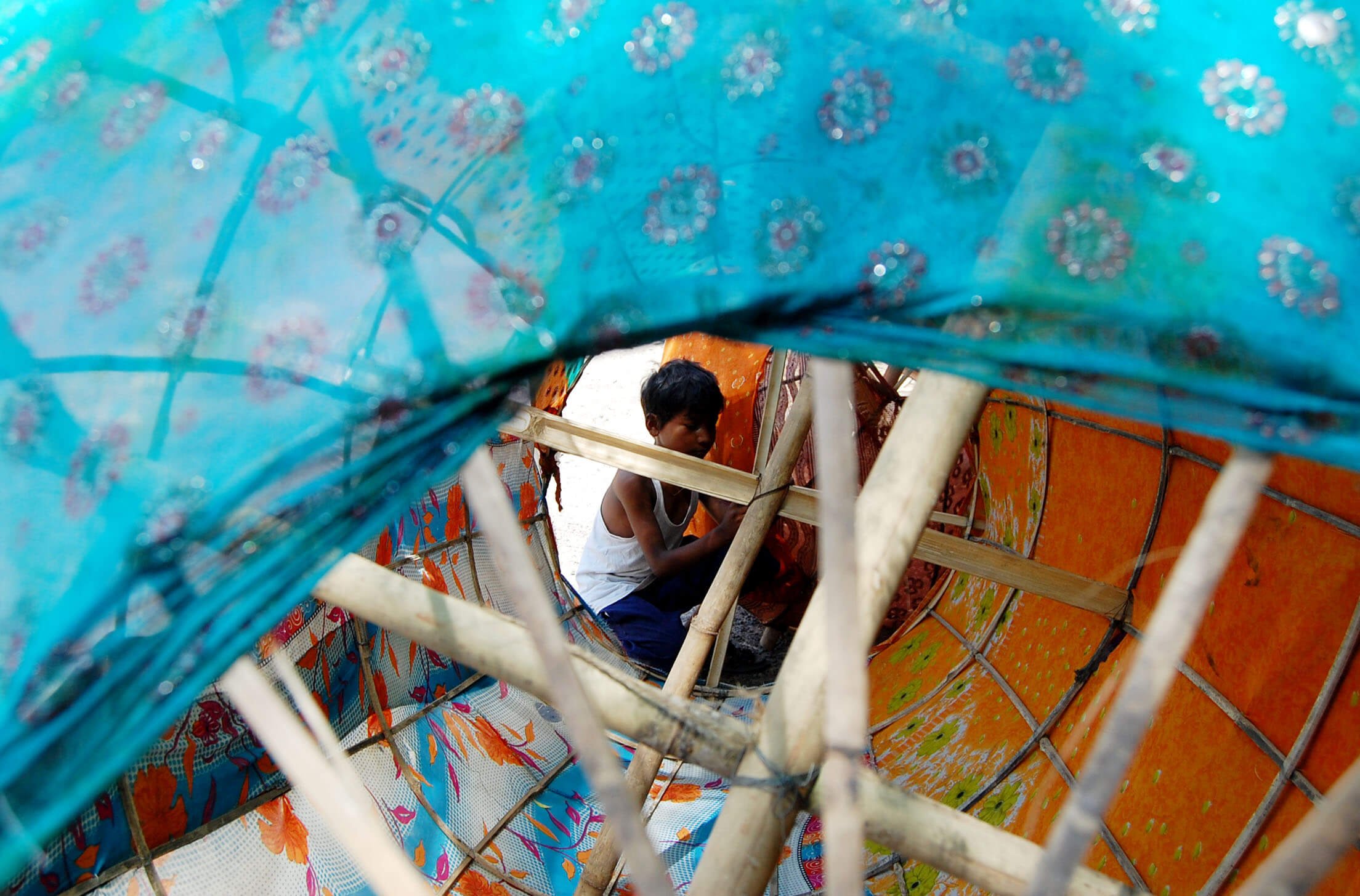
They work relentlessly through the night until dawn, using the surrounding silence to their benefit, harnessing all their energy and creativity into their art.
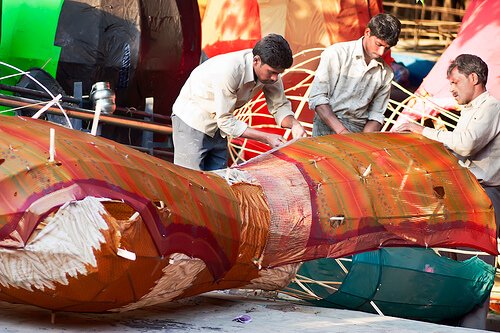
Empty streets, parks and grounds become makeshift workshops. Raw materials such as bamboo, silk, paper, rope, cardboard, paper, paint and glitter are used to create the final masterpieces, and everything from the electric eyes of the Ravana to his intimidatingly large moustache is crafted to perfection.
This league of effigy makers is found in Titarpur, a village nestled at the heart of Tagore Gardens in West Delhi. The streets of this little locality come to life during Dussehra season with buzzing activity and festive cheer unlike any other place. A proud community that boasts of an intriguing heritage, Titarpur has produced thousands of effigies over several decades.
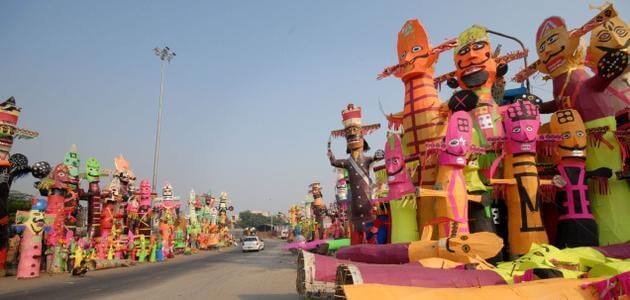
It all started with the legendary ‘Ravan Baba’, the man who started it all. Through his teachings, many generations took to this trade, gradually making it an exclusive enterprise. Attracted by the newly-found opportunities, many migrants from different parts of India joined them over the years, expanding the circle significantly.
Even though it is part-time, these artisans take great pride in their vocation. Extra earnings are a strong incentive as well.
Over time, they have gained a loyal customer base which keeps business afloat even in the midst of declining overall demand for effigies. A truth that is unfortunately threatening the survival of this lot.

When it comes to size, the range is quite impressive. Starting from miniatures of 2 feet, these effigies can go up to a staggering 80-100 feet tall. The finished products are delivered within Delhi and to other states. Sometimes, there are overseas orders too.
Considering the hard work that goes into building each effigy, it’s no surprise that these artisans cannot bear to watch them burn. Weeks and weeks of labour going up in smoke in a matter of minutes is a sight they’d rather avoid.
Soon enough, the city will be taken over by hundreds of Ravanas. They’ll stand tall and proud, looming over us mere humans. They will be admired and feared till their inevitable end triggers with a big blast.
And finally, you’ll know where they came from.






